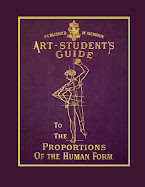
Gerard Audran
Gerard was already skilled in engraving, having surpassed his father in the craft and soon engraved some of LeBrun's giant historical paintings.
He travelled to Rome and produced more engravings which were praised for their technique and liveliness.
In 1683 he produced Les Proportions du Corps Humain which was a careful rendition of the famous statues of antiquity including careful measurements of each which according to Johann Gottfried Schadow
Pictured is the cover of a new edition titled The Proportions of the Human Body
The genius of this work though was to change those measurements into proportional measurements which could be used by all artists to apply to their own works in order to achieve the beauty of the classic form.
This is a new edition of Gerard Audran's engravings with a text that I translated to the best of my ability and some additional engravings of the classic statues so that the outline drawings with measurements that Audran made can be compared to a version rendered to look three dimensional.
At Amazon.com
Les Proportions du Corps Humain, Mesurees sur les plus belles Figures de l'Antiquite an original copy.
an original copy.
The following quotation is from The Wonders of Engraving By Georges Duplessis, London, 1871
In addition to the engravings we have named after Poussin and Charles Lebrun, we must mention as exceptionally superior works by Gerard Audran, 'The Burning Bush,' after Raphael ; ' The Martyrdom of St. Gervais and St. Protais ;' ' The Aurora ;' and ' The Martyrdom of St. Lawrence,' after Eustache Lesueur ; 'The Plague of Egina ;' 'The Cupola of the Val de Grace;' and 'The Ceiling of the King's Chamber at Versailles,' after Pierre Mignard. A few engravings after the statues of Michel Anguier, Gaspard de Marsy, and Girardon, close our list of this indefatigable artist's excellent works. Until his death at Paris on the 26th of July, 1703, Gerard Audran devoted his great talent to the fine arts. We have also a treatise embellished with engravings by this master on 'The Proportions of the Human Body, after the finest Figures of Antiquity.' This work is still worthy of the honour in which it has been held since its publication (1683).The Wonders of Engraving
Another post about LeBrun.
Recherche par nom d’artiste ~ Auteur recherché : Le Brun, Charles (1619-1690)
Related Book on the use of drawings to transmit artistic ideas from one region to another and throughout time, these hand made books were called "model books" and this book discusses them and gives examples.
Polyclet;: An analysis of measurements and proportions of the human figure for artists and sculptors; Text and Revisions by Harold Swartz a 1947 republication. Harold Swartz was an instructor of sculpture at the Chouinard Art School in Los Angeles as well as being a sculptor, writer and lecturer.
Text and Revisions by Harold Swartz a 1947 republication. Harold Swartz was an instructor of sculpture at the Chouinard Art School in Los Angeles as well as being a sculptor, writer and lecturer.
Original German text at Google Books.
2008 Republication: The Art Student's Guide To The Proportions Of The Human Form .
.




























